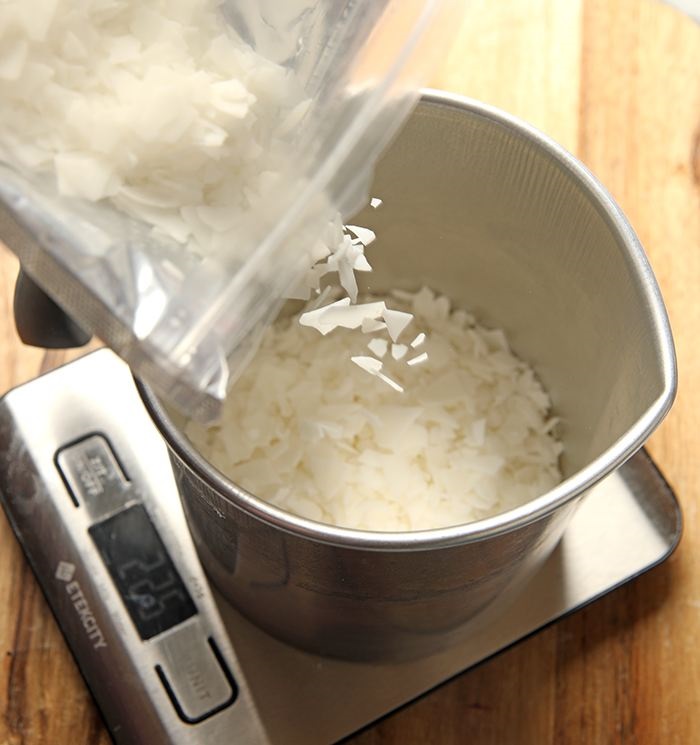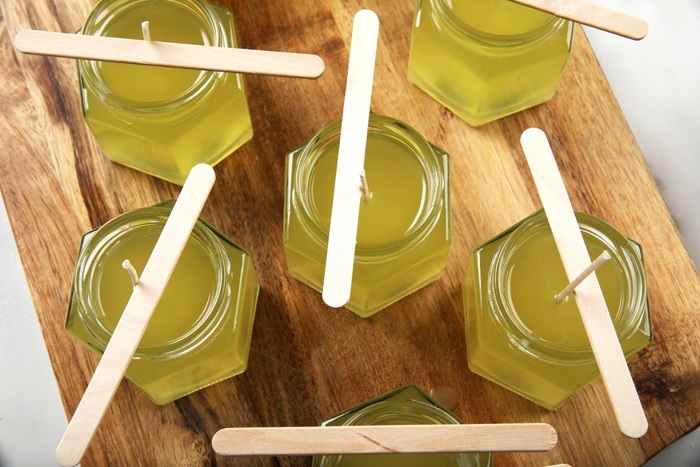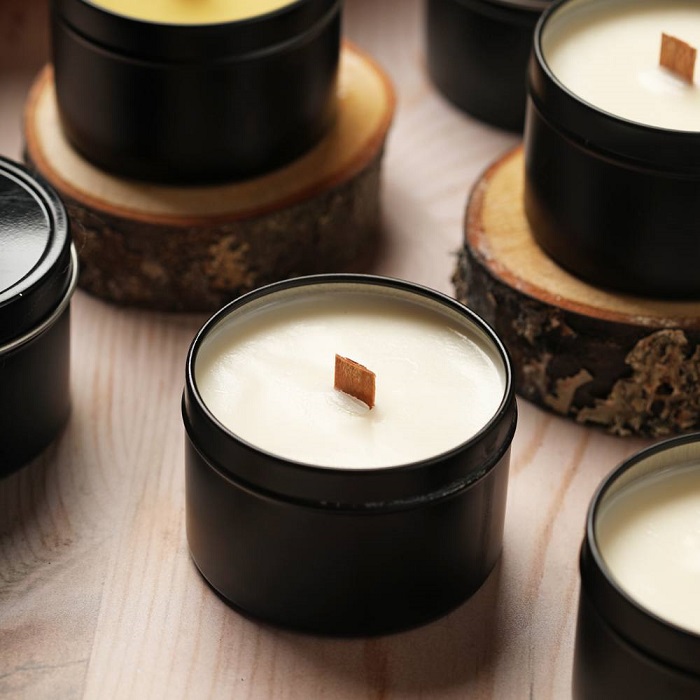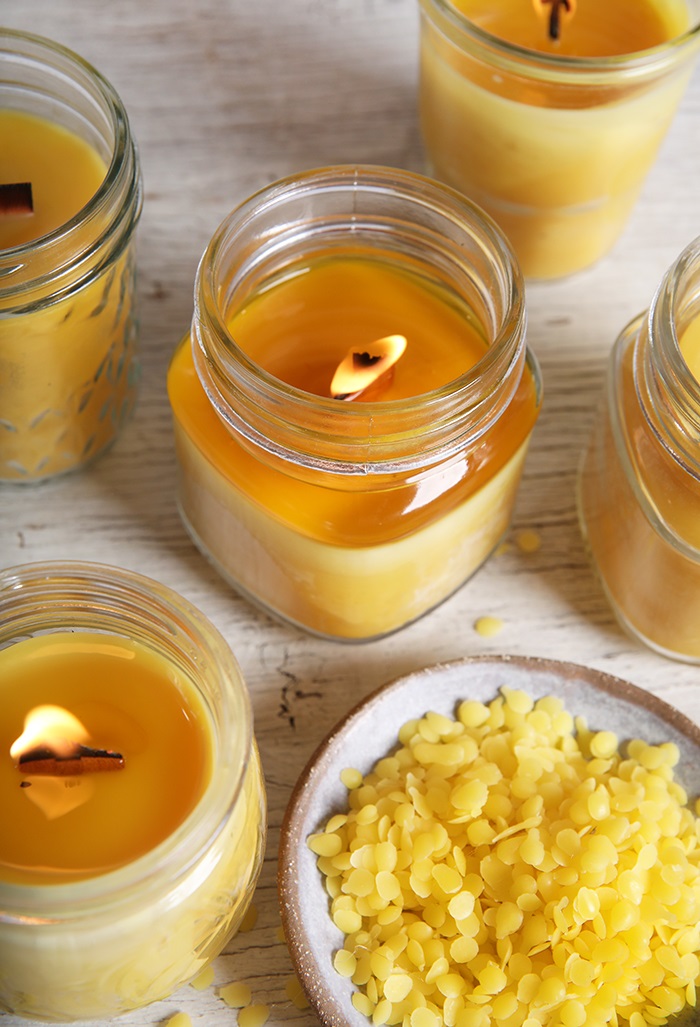If you’re getting started making DIY candles, you have some choices to make. Wick material, wick size, container size, and more. The type of wax you use is important. It determines the amount of fragrance, the wick size, and even the container type.
We can make wax choices a little simpler with a little information. Each wax is going to have different characteristics. Each will burn differently, have different scent throw, and different levels of adhesion to your candle container. Let’s take a look at some of our waxes and how they work.
Coconut Wax
Coconut wax is a softer wax. This makes the wax easier to work with, and a cleaner burn. It also has excellent hot scent throw, or the strength of scent released while the candle is burning. That means that you may not need as much fragrance for a coconut wax candle. Coconut wax is also a little more forgiving. You don’t need as precise measurements to make your candle work well.
Coconut wax tends to be slightly more expensive than some of the other waxes available, but it’s still quite affordable. Coconut wax is also less likely to experience frosting, a whitish powdery or crystalline coating on the surface of the wax. This frosting is only an aesthetic flaw, and doesn’t impact the scent or burn of the candle.

Soy wax in DIY candles
Soy wax is a bit firmer than coconut wax. While this means a lower hot scent throw, it also means that your candle is going to have a longer burn time than a coconut wax candle. If your candle isn’t going to be scented, this is great.
If you’re adding fragrance to a soy wax candle, keep in mind that you may need to measure fragrance more accurately and use a little more than you would for a softer wax.
Because soy wax production happens on a large scale, it’s typically less expensive than coconut wax. This large scale production is due to an already widespread demand for soy wax.
Soy wax has a higher melting point than coconut wax, which contributes to its long burn time. It’s more likely to experience frosting, though. If you’re not coloring your candles, or are making container candles, frosting may be barely noticeable in the finished product.

Coconut soy wax blend for candle making
We create this coconut soy wax blend to give our makers the best of both worlds. It’s slightly harder than coconut wax, which improves burn time. It’s a little softer than soy wax, which gives it superior hot scent throw. It has great adhesion to glass containers, and it experiences minimal frosting, both of which lead to a more beautiful candle.
Our coconut soy wax blend is paraffin free, and we tested dozens of recipes to make sure we had the best balance for making great quality scented candles.

About beeswax candles
Beeswax is a natural wax produced by bees in their honeycombs, and is a byproduct of honey production. Beeswax is harder than soy wax, and has a higher melting point. Because of this, beeswax candles tend to have a longer burn time.
Beeswax also may not have the same scent throw as soy or coconut wax, meaning you may have to use more fragrance to achieve the same results.
Natural beeswax has a golden color and a slightly sweet, honey-like smell. If you’re using a scent that isn’t complemented by that sweetness, you can get deodorized beeswax. Likewise, the golden color of beeswax can interfere with the colors you choose for your DIY candles, but white beeswax is available as well. This white, deodorized beeswax can be more expensive than natural beeswax, though.
If you’re making unscented candles, that slightly sweet smell might be a welcome if subtle addition to your candle burning experience.
Beeswax also tends to be more expensive than soy wax or coconut wax, because of how it’s produced.
It’s worth noting that beeswax is an animal product, and is not compatible with a vegan lifestyle. If you don’t use animal products, one of our coconut or vegetable based waxes is an excellent alternative.

Other vegetable based candle waxes
There are other waxes made from vegetable oils, including our Golden Wax 444, Golden Wax 464, and Nature Wax C-3.
Golden wax is a soy wax with a soy-based additive that reduces frosting and improves scent throw. It’s designed specifically for container candles, and has better fragrance adhesion (ability to hold fragrance oils) than pure soy wax.
Golden Wax 444 has a higher melting point and is firmer than Golden Wax 464. Which one your choose depends on your needs and preferences.
Nature Wax C-3 is a soy wax. It holds less fragrance than the Golden Wax options. It adheres well to the sides of candle containers, even glass, and when heated and poured correctly, produces a very smooth top to your candle.
It burns well, and despite it retaining less fragrance oil than some other waxes, has great scent throw. This is a great reason to always test fragrance in your candles. Different amounts of fragrance oils produce different intensities of scent in different waxes.
No matter what your candle project is, we’re sure that we have a wax to meet your needs. With a little information at your fingertips, you’re well prepared to choose the perfect wax. Check out our selection of candle waxes and get inspired.

